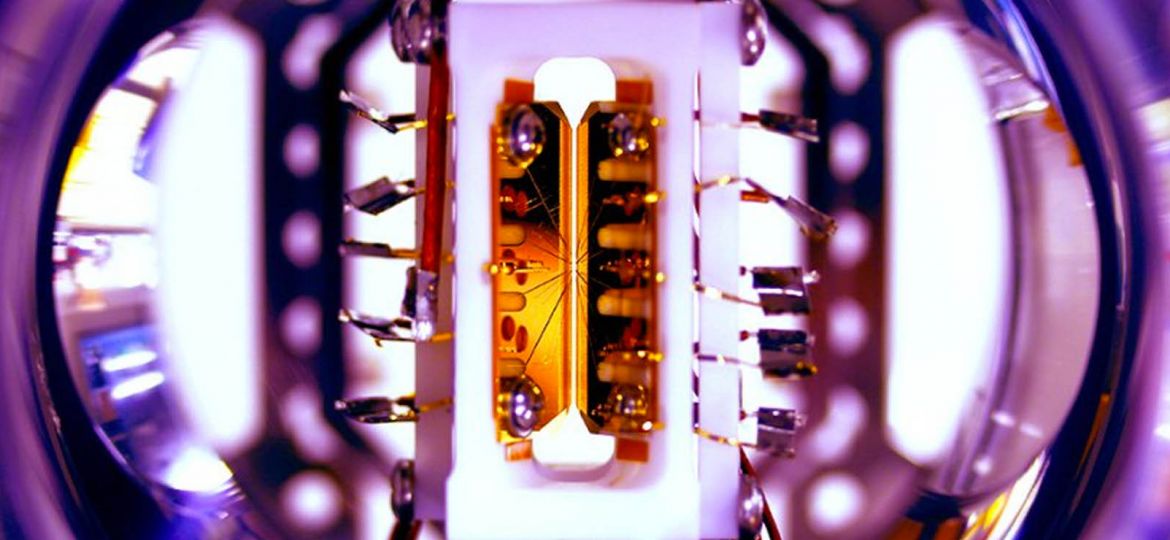
WHY THIS MATTERS IN BRIEF
Being able to re-program quantum computers, in the same way we can re-program today’s computers will mean companies don’t have to spent huge amounts of money developing special quantum algorithms.
Scientists have created the first programmable and reprogrammable quantum computer, according to a new study published in Nature and the new break through could help usher in the much anticipated era of quantum computing, which researchers say would help scientists run complex simulations in minutes rather than todays’ days or years.
Previous research suggested that quantum computers could simultaneously perform more calculations in one instant than there are atoms in the universe – which is a lot! And prior work also found that such capabilities would allow quantum computers to solve certain problems much faster than conventional computers can, for instance, breaking encryption that would take regular computers longer than the lifetime of the sun to crack could now just take a few minutes, which is one of the major reasons why the US Government are hastily moving away from 1,024 bit encryption to 2,048 bit encryption.
The functioning of quantum computers depends on the bizarre, surreal nature of quantum physics. The field suggests that atoms and other fundamental building blocks of the universe actually exist in states of flux known as “superpositions.” ThisThat means that atoms, for example, can spin in two opposite directions at the same time.
That kind of superposition makes quantum computing fundamentally different from traditional computers. Classical computers represent data as 1’s and 0’s, binary digits known as “bits” and are symbolized by flicking switch like transistors either on or off. Quantum computers, on the other hand, use quantum bits, or “qubits,” that are in superpositions, meaning that they are simultaneously on and off. This enables a qubit to essentially perform two calculations simultaneously and this is why quantum computers will be millions of times more powerful than their current day counter parts.
Many research groups previously created small but functional quantum computers. However, these devices are typically specialized to run just one algorithm, or step-by-step set of operations.
“Until now, there hasn’t been any quantum computing platform that had the capability to program new algorithms into their system. They’re usually each tailored to attack a particular algorithm,” said study lead author Shantanu Debnath, a quantum physicist and optical engineer at the University of Maryland, College Park.
Now, Debnath and his colleagues have developed the first fully programmable and reprogrammable quantum computer. The new device is made of five qubits. Each qubit is an ion, or electrically charged particle, trapped in a magnetic field.
The scientists can use lasers to manipulate these ions, five ytterbium atoms infusing them with precise amounts of energy and influencing their interactions with each other. In this way, the researchers can program and reprogram the quantum computer with a variety of algorithms.
The researchers tested their device on three algorithms that quantum computers, as prior work showed, could execute quickly. One, the so-called Deutsch-Jozsa algorithm, is typically used only for tests of quantum-computing capabilities. Another, the Bernstein-Vazirani algorithm, can also be used to probe for errors in quantum computing. The last, the quantum Fourier transform algorithm, is an element in quantum-computing encryption-breaking applications.
The Deutsch-Jozsa and Bernstein-Vazirani algorithms successfully ran 95 and 90 percent of the time, respectively. The quantum Fourier transform algorithm, which the researchers said is among the most complicated quantum calculations, had a 70 percent success rate, they said.
In the future, the researchers will test more algorithms on their device, Debnath said.
“We’d like this system to serve as a test bed for examining the challenges of multiqubit operations, and find ways to make them better.”
















